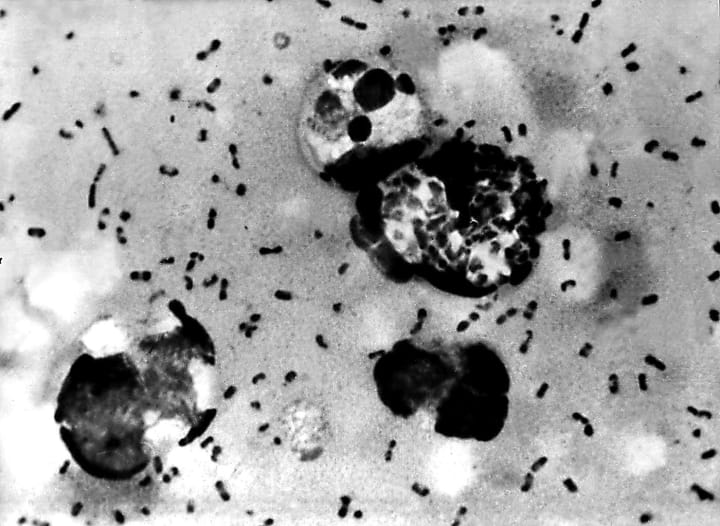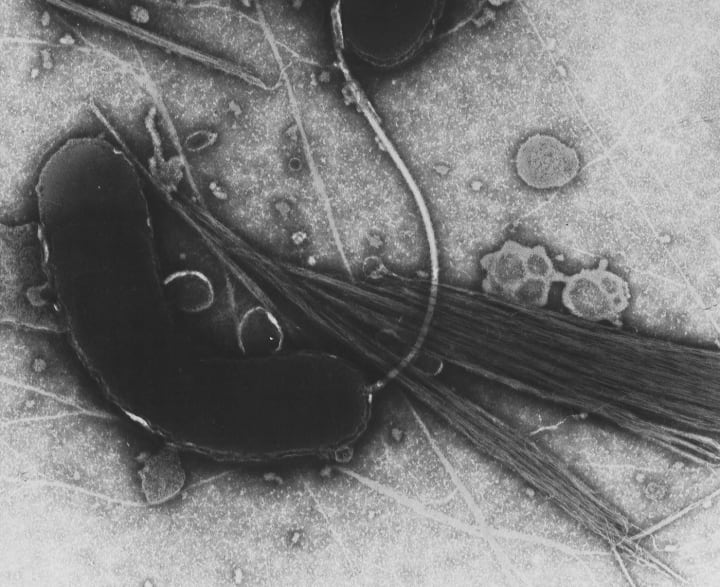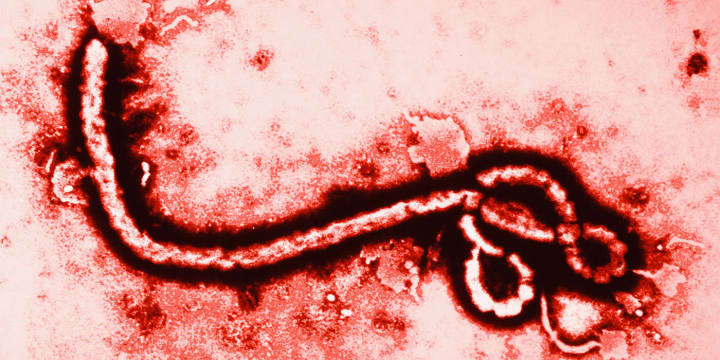History of Deadly Diseases
The history of deadly diseases is both a look at the past and perhaps, unfortunately, a look to the future.
Humans have been dealing and living with the realities of deadly diseases for thousands of years. For the majority of this time period, there were little to no effective methods for controlling the diseases. While modern medical technology has changed these statistics, countless individuals still die everyday from deadly pathogens, most of which are preventable. In this article, we will explore the history of some of the world’s most infamous diseases.
Malaria

Malaria, a disease that still ravages some of the world’s most under developed countries, has been recorded by humans for over 4,000 years. Some of the earliest descriptions of the symptoms of malaria come from ancient China around 2700 BC. The disease was recorded in medical writings called the Nei Ching. By the 4th century BCE, the Greeks were beginning to recognize the deadly effects of malaria. The disease was responsible for the depopulation of many areas. In the seventeenth century, when Spanish Missionaries came to the New World, they learned of a medicinal bark that was very effective in the treatment of malaria. The medicine that comes from this bark is today known as Quinine, which is still considered to be a very effective treatment. In 1880, a French man named Charles Louis Alphonse Laveran discovered the malaria parasite; in 1907, he was awarded the Nobel Prize. In 1897, Ronald Ross demonstrated that mosquitos could transmit malaria; Ross was also awarded the Nobel Prize for his work. Once the secrets of this disease where uncovered, the CDC was able to combat malaria and eventually eradicate it completely in the twentieth century.
The Bubonic Plague

The bubonic plague is another deadly disease that has taken millions of lives, most notably in Europe in the 1300s. The disease killed an incredible 50 million people or about 60% of the European population in the 14th century. The pathogen was spread by black rats, or ship rates who lived very close to people, making the situation much more dangerous. It is currently believed that the bubonic plague originated in an area stretching from the shores of the Caspian Sea into Southern Russia. The plague eventually made its may into Europe where it destroyed the lives of millions of people. The bubonic plague eventually came to and end due to a variety of factors. One of which includes better personal hygiene, which was being practiced by more people during the outbreak in Europe.
While the bubonic plague began in Europe in medieval times, the deadly disease known as smallpox began to infect humans much earlier. It is believed that this disease began to effect humans around 12,000 years ago during a time when society was dominated by small-scale agricultural operations. Evidence exists for the existence of smallpox in what is called the New Kingdom of Egypt. The mummy of Ramses V features prominent bumps on his face consistent with smallpox. In addition, ancient Egyptian papyrus scriptures where uncovered which most likely described the smallpox disease. Moving forward a few thousand yeas, we come to ancient Greece where it is believe that smallpox was responsible for various plagues to Athens, which killed millions of individuals. This deadly disease is even credited with speeding up the fall of the Roman Empire. Ultimately, smallpox made its way to Europe by the 6th century. While this disease was very deadly in Europe, it was even more devastating in the New World. The native people of the Americas had not yet been exposed to smallpox, and were therefore very susceptible to infection. It is believed that various European diseases, including smallpox, killed nearly 90% of the native population of North and South America. The groups most affected included the Aztecs and the Incas who were devastated by the conquering Europeans. In many cases, this devastation was no accident, for the Europeans would often distribute smallpox infected blankets to the Native Americans in order to weaken and make them easier to conquer. Eventually, some treatments were discovered for this devastating disease. A common practice was to extract a scab or puss from a person who has a mild case of the disease and use it to infect a person who had not yet contracted the pathogen. The theory was that this process would allow the infected individual to become immune to the disease and prevent any future infections. This is an incredibly significant development in the field of disease treatment because it represents some of the first applications of the vaccine methodology that is widely used in the twenty-first century. In 1796, it was discovered by an English doctor that smallpox immunity could be achieved by extracting puss from a milkmaid with cowpox (a similar disease to smallpox) and inserting the puss into the body of another healthy individual. This is considered to be the worlds first vaccine pioneered by Doctor Edward Jenner. The vaccine concept initially spread slowly, but overtime, the breakthrough caught on and by 1980, smallpox was considered eradicated.
Cholera

Cholera is yet another deadly disease which has been prolific throughout the world for centuries. Reports of such a disease date back to around 1000 AD in India. The 16th century saw several outbreaks of cholera. The 19th century exhibited a similar pattern, which was especially severe in London where Dr. John Snow finally isolated the disease to water sources in the city. The water pump of primary concern was removed and eventually the area saw a huge decrease in cholera cases. This incident is significant because it represents one of the first epidemiological studies conducted in modern times. Robert Koch who is also credited with finding the cause of tuberculosis was the first to publicize the bacteria that leads to cholera. There were several outbreaks of cholera in the United States during the 1800s and into the early 1900s. Luckily, cholera is relatively rare today in United States due to modern water treatment facilities. However, the disease is still very much present in developing countries around the world that do not have access to water treatment technologies.
Mad Cow Disease

Next we will examine mad cow disease, an epidemic with a laughable name that comes with serious consequences. Bovine spongiform encephalopathy (BSE) or mad cow disease is a fatal pathogen observed in cattle, which causes the brain to deteriorate. This disease can be passed on to humans through just about any part of the carcass of an affected cow. Just as in the animal, BSE is also deadly to human beings. This terrifying disease was first detected in the Unites States in 2003. However, before this discovery, mad cow disease had already been detected in the United Kingdom in the 1980s, putting authorities on high alert. When this deadly outbreak peaked, there were infected cattle being reported on a daily basis in the United Kingdom. Eventually, the epidemic subsided and only a small fraction of the 1000 cattle were being reported daily. However, problems did not stop here, for as recently as 2014, the US Department of Agriculture was forced to recall over 4000 pounds of beef that was thought to have been infected with mad cow disease. While mad cow disease is very uncommon in the Untied States, the government still prohibits people from donating blood who live in areas with a history of the disease.
Ebola

Ebola, a more well know disease then BSE has made headlines relatively recently for its presence in various portions of Africa. While the memory of this deadly disease is likely fresh in the minds of many, Ebola was first reported back in 1976 in Zaire, or the Democratic Republic of the Congo. It was reported that the disease was spread through the transfer of bodily fluids that might occur during the use of contaminated needles. The disease was also recorded in the same year in Sudan where some hospital workers were also infected with the deadly disease. Late in 1989, Ebola infected monkeys were imported into the United States from the Philippines. In 1989 and 1990, three human cases were reported in a contaminated primate facility in the Philippines. Again in 1995, Ebola reappeared in Zaire and was responsible for another 315 human cases. The next major event, which involved many human infections, occurred in Uganda in 2000 and 2001; 425 human cases of Ebola were reported. Jumping a few years to March 2014, 28,639 human cases of Ebola were recorded. Every other major outbreak of Ebola combined does not come close to the sum of cases in the most recent occurrence of Ebola.
While all of the deadly diseases mentioned in this article have killed thousands or even millions of people, we are lucky to live in a modern technology driven world where medical resources are available for the common person. We no longer rely on wine or fragrant herbs to cure bubonic plague. And we defiantly do not drape red cloths around a person’s bed hoping to miraculously cure them of smallpox. Today, scientists posses modern medical knowledge and no longer have to rely on speculation and magic to cure patients. Now you can sleep peacefully tonight with the knowledge that you are safe from these horrifying diseases in the comfort of your modern world.
Smallpox

Smallpox has become one of the only two infections diseases to be declared completely eradicated. However, this does not erase the damage it has done in the past. Small pox has claimed the lives of an estimated 500 million in the 20th century alone. In Europe in the late 18th century, it was claiming 400,000 lives a year.
It is believed that smallpox emerged in humans around 10,000 B.C., and the earliest physical evidence of it can be found on the mummy of Pharaoh Ramses V of Egypt. Aside from the massive death tolls, smallpox accounted for a third of all blindness in Europe in the closing years of the 18th century. Of those infected, 20 to 60 percent, and over 80 percent of children, died of the disease.
About the Creator
Futurism Staff
A team of space cadets making the most out of their time trapped on Earth. Help.






Comments
There are no comments for this story
Be the first to respond and start the conversation.